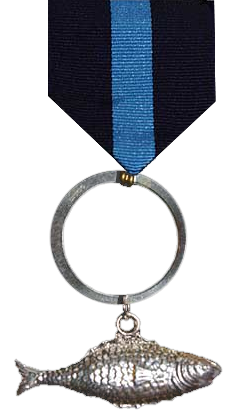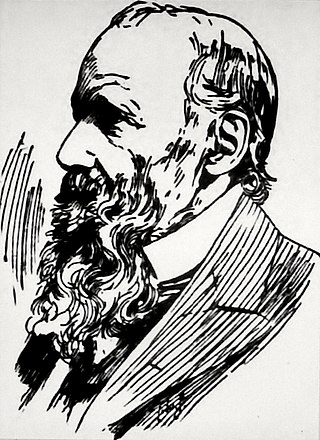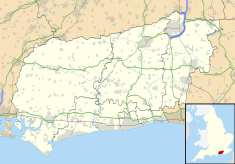
Freehold is a borough and the county seat of Monmouth County, in the U.S. state of New Jersey. Known for its Victorian era homes and rich colonial history, the borough is located in the Raritan Valley region within the New York Metropolitan Area, located about 33 miles (53 km) from Manhattan and 17 miles (27 km) from Staten Island. The borough has grown to become a commuter town of New York City. As of the 2020 census, the borough's population was 12,538, reflecting an increase of 486 (+4.0%) from the 10,976 counted in the 2000 census, which had in turn increased by 234 (+2.2%) from the 10,742 counted in the 1990 census.

Freehold Township is a township in Monmouth County, in the U.S. state of New Jersey. The township is both a regional commercial hub for Central New Jersey and a bedroom community of New York City, located within the Raritan Valley region of the much larger New York Metropolitan Area. The township is located roughly 38 miles (61 km) away from Manhattan and about 20 miles (32 km) away from Staten Island. As of the 2020 United States census, the township's population was 35,369, reflecting a decrease of 815 (−2.3%) from the 36,184 counted in the 2010 Census.

Sir Edwin Arnold KCIE CSI was an English poet and journalist, who is most known for his work The Light of Asia.

Withington is a suburb of Manchester, England. Historically part of Lancashire, it lies 4 miles (6.4 km) from Manchester city centre, about 0.4 miles (0.6 km) south of Fallowfield, 0.5 miles (0.8 km) north-east of Didsbury and 1 mile (1.6 km) east of Chorlton-cum-Hardy. Withington has a population of just over 14,000 people, reducing at the 2011 census to 13,422.

Angmering is a village and civil parish between Littlehampton and Worthing in West Sussex on the southern edge of the South Downs National Park, England; about two-thirds of the parish fall within the Park. It is 1.5 miles (2.4 km) north of the English Channel; Worthing and Littlehampton are 3.5 miles (5.6 km) to the east and west respectively. It has been inhabited since the Bronze Age and there are the remains of a Roman Villa and bath house. In 1976, Angmering was twinned with the Normandy town of Ouistreham on the "Riva-Bella", the location of the World War II Normandy Landings' Sword Beach.

Horsham is a constituency represented in the House of Commons of the UK Parliament, centred on the eponymous town in West Sussex, its former rural district and part of another rural district. Its Member of Parliament (MP) was Francis Maude between 1997 and 2015; since then it has been Jeremy Quin, both of the Conservative Party.

The County Cricket Ground, known for sponsorship reasons as The1st Central County Ground, is a cricket venue in Hove, East Sussex, England. The County Ground is the home of Sussex County Cricket Club, where most Sussex home matches since 1872 have been played, although many other grounds in Sussex have been used. Sussex CCC continue to play some of their games away from The County Ground, at either Arundel Castle and Horsham. It is one of the few county grounds to have deckchairs for spectators, in the Sussex CCC colours of blue and white, and was the first cricket ground to install permanent floodlights, for day/night cricket matches and the second ground to host a day/night match in England, in 1997.

Telscombe is a civil parish and electoral ward with the status of a town in the Lewes District of East Sussex, England. It consists of three distinct settlements, separated from each other by an open area of downland called Telscombe Tye.
Ansty and Staplefield, previously Cuckfield Rural, is a civil parish in the Mid Sussex District of West Sussex, England, covering an area from the north-west side of Burgess Hill, the whole lying around but mostly to the west of Cuckfield civil parish, from which it was created in 1894 under the Local Government Act 1894. It includes the settlements of Ansty in the south, Staplefield to the north-west and Brook Street to the north-east. It is the largest civil parish in West Sussex, covering an area of 3,869 hectares (14.94 sq mi), and has a population of 1574, increasing to 1,756 at the 2011 Census.

The Silver Fish Award is the highest adult award in Girlguiding. It is awarded for outstanding service to Girlguiding combined with service to world Guiding. The award has changed greatly since it first appeared in 1911, initially being awarded to girls on completion of a number of badges, then via numerous stages to the highest award in the Guiding movement worldwide, and then on to its position as a Girlguiding award.

Sir William Edgar Horne, 1st Baronet was a British businessman and Unionist politician. A surveyor and a director of numerous companies, he was best known for his role as Chairman of the Prudential Assurance Company from 1928 to 1941.

Thomas Edward Wilkinson (1837−1914), known as Edward Wilkinson, was an Anglican bishop, legionnaire and travel writer in the late 19th and early 20th centuries. The sixth child of a gentleman farmer, he was born at Walsham Hall, Walsham le Willows, Suffolk. Before he was ordained, he joined the French Foreign Legion and travelled around Europe.
Frederic Henry de Winton MA (1852–1932) was an Anglican clergyman and the last Missionary Fellow of Jesus College, Oxford. De Winton was Archdeacon of Colombo from 1891 until 1901.

Donald Lacey Priestley was an English cricketer who played for Gloucestershire County Cricket Club from 1909 to 1910. He made his debut in the County Championship against Sussex at the County Ground, Hove. In May 1910, he scored fifty-one runs against Hampshire at the County Ground, Southampton. His final first class appearance for Gloucestershire was against Worcestershire at the War Memorial Ground, Stourbridge.
Edward Steinkopff was a German entrepreneur and art collector who lived much of his life in Britain. He co-founded the Apollinaris mineral water company, and was the proprietor of the London evening newspaper St James's Gazette. He spent much of his life in Glasgow and London.

Richard Gibson Kyle (1820–1903), known professionally as Gibson Kyle, was an English architect practising in and around Newcastle upon Tyne. His father was a Northumberland journeyman mason and contractor-builder. Kyle was articled to his uncle John Dobson and worked with him on local projects such as Newcastle railway station, some of the Quayside buildings, and the King Street-Queen Street block which was the site of a major fire in 1867.

Ote Hall Chapel is a place of worship belonging to the Countess of Huntingdon's Connexion—a small Nonconformist Christian denomination—in the village of Wivelsfield in East Sussex, England. The Connexion was established as a small group of Evangelical churches during the 18th-century Evangelical Revival by Selina Hastings, Countess of Huntingdon, and this chapel is one of the earliest: founded by the Countess herself in 1778 as a daughter church of the original chapel in Brighton, it has been in continuous use since 1780. Historic England has listed the building at Grade II for its architectural and historical importance.

William Gott, was a British wool merchant, mill owner, philanthropist towards public services and art collector from Leeds, West Riding of Yorkshire, England.

Thomas Holroyd was an English portrait and landscape painter working in Harrogate, North Riding of Yorkshire, England. Before his marriage he undertook painting tours to the United States, Canada, Europe, Egypt, Russia and the Holy Land. Returning to Harrogate, he painted portraits of the local worthies there. He shared responsibility for the successful photography business T & J Holroyd with his brother James, and continued to run the business after his brother died. Holroyd was a founding member of Harrogate Liberal Club.



















